Storing chocolate properly is essential to maintain its flavor, texture, and overall quality over time. Whether you’re preserving a fine artisanal bar or a bulk supply of baking chocolate, the right storage techniques can prevent spoilage and ensure the chocolate remains as delicious as the day you bought it.
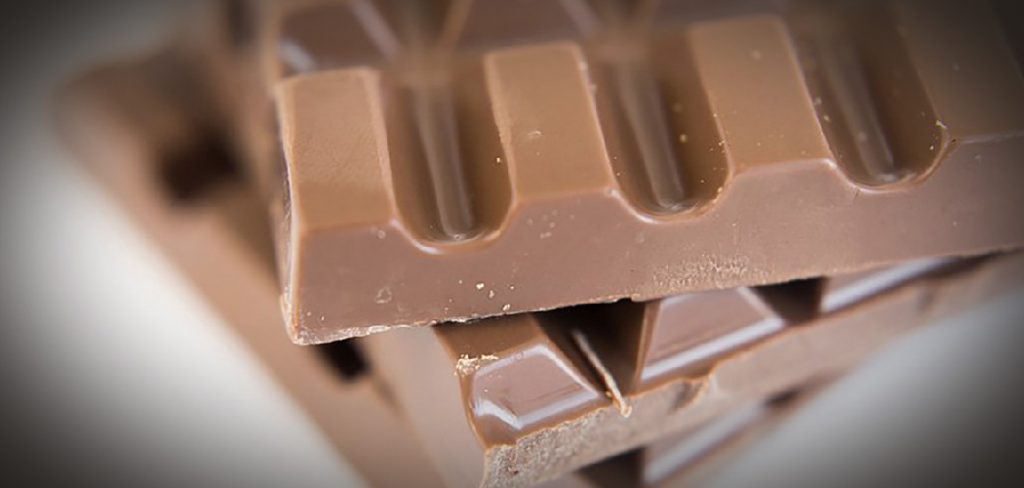
This guide explores the key aspects of how to store chocolate long term. Understanding the factors that affect chocolate, such as temperature, humidity, and light exposure, is key to extending its shelf life while preserving its rich and decadent taste.
Factors That Affect Chocolate Storage
Several factors play a critical role in determining how well chocolate can be stored over time. Understanding these factors can help mitigate risks and preserve the quality of your chocolate.
Temperature
Chocolate is highly sensitive to temperature fluctuations. Ideally, it should be stored between 60°F and 68°F (15°C to 20°C). Exposure to higher temperatures can cause the cocoa butter to melt, leading to fat bloom, which creates an unappealing white or grayish coating. Conversely, extremely low temperatures may cause the chocolate to lose its creamy texture.
Humidity
High humidity can result in sugar bloom, a condition where moisture from the air dissolves the sugar in chocolate, leaving behind a rough, grainy surface when it dries. To avoid this, aim for a storage environment with humidity levels below 50%.
Light Exposure
Prolonged exposure to light, especially sunlight or artificial UV light, can degrade the flavor and aroma of chocolate. Keep it away from direct light to ensure its rich taste is not compromised.
Exposure to Air and Odors
Chocolate easily absorbs odors from its surroundings, which can alter its flavor. Properly sealed packaging or airtight containers can help protect against unwanted scents. Similarly, limiting air exposure will prevent the chocolate from drying out or becoming stale.
By controlling these elements, you can significantly extend the shelf life of chocolate, guaranteeing that it remains an indulgent treat for months or even years to come.
Understanding Chocolate Storage Needs
To fully preserve chocolate’s quality, it is crucial to recognize its specific storage requirements. Unlike many other food items, chocolate is delicate and sensitive to environmental conditions, requiring a careful balance of temperature, humidity, and protection from external factors. The type of chocolate being stored, whether dark, milk, white, or filled with ingredients like nuts or fruit, also influences how it should be handled. Dark chocolate, for instance, tends to have a longer shelf life due to its lower milk and sugar content, while milk and white chocolates are more prone to spoilage.
By tailoring storage practices to the unique needs of each chocolate variety, you can ensure they retain their flavor, texture, and appearance over time. Understanding these needs is the foundation for mastering long-term chocolate storage.
When Refrigeration is Necessary
While chocolate is best stored at room temperature under ideal conditions, there are instances when refrigeration may become necessary. For example, if you live in a hot or humid climate where indoor temperatures regularly exceed 70°F (21°C), refrigeration can help prevent chocolate from melting or developing fat bloom. However, storing chocolate in the refrigerator requires special care to avoid introducing moisture, which can lead to sugar bloom or flavor loss.
Before refrigerating chocolate, wrap it tightly in plastic wrap or aluminum foil and place it in an airtight container to minimize contact with moisture and odors. When removing chocolate from the fridge, allow it to come to room temperature while still wrapped to prevent condensation on its surface. By following these precautions, refrigeration can be a viable option for preserving chocolate when necessary.
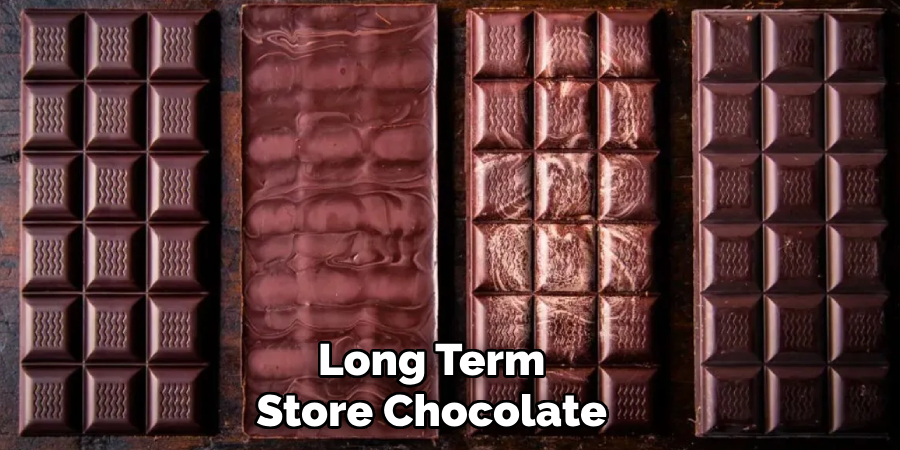
How Freezing Affects Chocolate Texture and Taste
Freezing chocolate may seem like a practical solution for long-term storage, but it can significantly impact its texture and taste if not done correctly. While freezing can help prevent spoilage and extend the shelf life of chocolate, it introduces challenges related to moisture and structural integrity.
When chocolate is frozen, changes in temperature can cause condensation to form on its surface after thawing. This condensation can lead to sugar bloom, creating a gritty or grainy texture and altering the chocolate’s smooth mouthfeel. Additionally, the delicate balance of flavors in high-quality chocolate can be affected during the freezing process, resulting in a less refined taste when compared to fresh chocolate.
To minimize these effects, proper wrapping and airtight storage are essential before freezing. Double-wrap the chocolate in plastic wrap or foil, and place it inside an airtight container to protect it from humidity and odors. Like refrigerating chocolate, thawing is a critical step in preserving its quality.
Storing Different Types of Chocolate for Longevity
Each type of chocolate has unique characteristics that influence how it should be stored to maximize its shelf life. Proper handling and storage practices tailored to the specific type of chocolate can ensure that it retains its flavor, texture, and appearance over time.
Dark Chocolate
Dark chocolate has the longest shelf life compared to other types of chocolate due to its high cocoa content and lower amounts of milk and sugar. When stored in a cool, dark, and dry environment at temperatures between 60°F and 68°F (15°C to 20°C), dark chocolate can remain fresh for up to two years. To maintain its quality, keep it in an airtight container and away from strong odors, as it is prone to absorbing surrounding scents.
Milk Chocolate
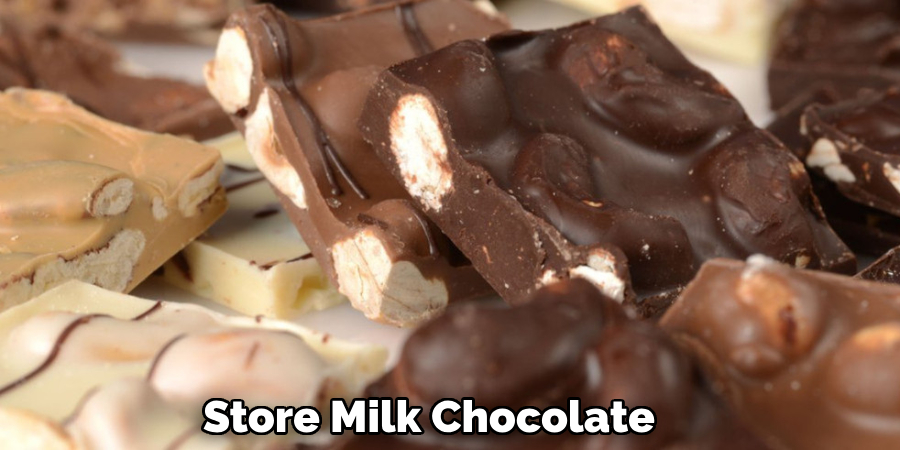
Milk chocolate contains more dairy and sugar than dark chocolate, making it more susceptible to spoilage and flavor degradation. Its shelf life typically ranges from 6 to 12 months under proper storage conditions. Like dark chocolate, milk chocolate should be stored in an airtight container in a cool, dry place, with humidity levels below 50%, to prevent sugar or fat bloom.
White Chocolate
White chocolate’s composition of cocoa butter, sugar, and milk solids makes it highly sensitive to heat, light, and humidity. This type of chocolate is prone to developing an off flavor and texture if not carefully protected. White chocolate can generally last for 4 to 6 months when stored in optimal conditions—cool, dry, and away from direct sunlight.
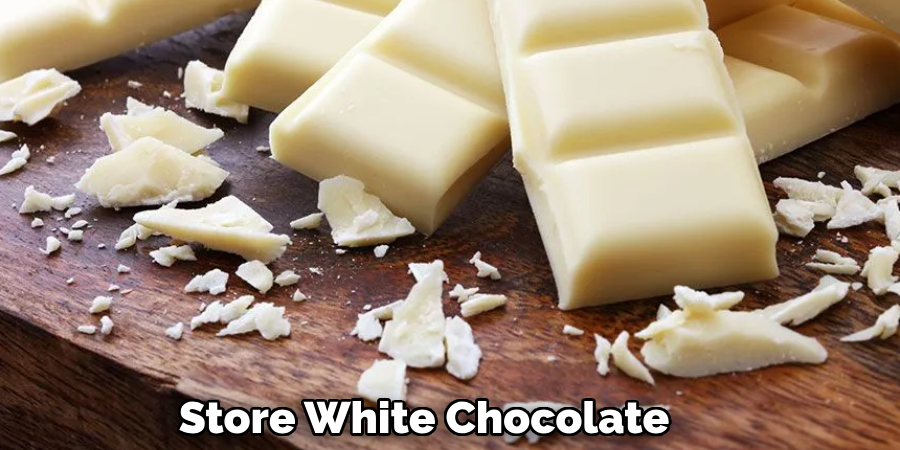
Chocolate with Fillings or Additives
Chocolate that contains fillings, such as caramel, cream, fruit, or nuts, often has a shorter shelf life due to the perishability of the added ingredients. These chocolates are best enjoyed fresh and are usually good for only a few weeks to a couple of months, depending on the specific filling.
To extend their freshness, ensure they are stored in an airtight container in a cool environment, and consider refrigeration if the fillings are particularly delicate or perishable. However, be cautious to protect them from moisture.
Safety Considerations on How to Store Chocolate Long Term
When storing chocolate, safety considerations are essential to prevent contamination and ensure a high-quality product. One key factor to keep in mind is the risk of cross-contamination, as chocolate can easily absorb odors from nearby foods or substances. Always store chocolate away from strong-smelling items, such as spices, onions, or cleaning products, to preserve its delicate flavor profile. Additionally, ensure that storage containers and wrappings are food safe and free from any harmful chemicals that could leach into the chocolate.
Another important safety concern is monitoring for signs of spoilage. While properly stored chocolate is not highly perishable, it can develop mold or an unpleasant odor if exposed to excessive moisture or stored in unsanitary conditions. Inspect the chocolate for any discoloration, unusual textures, or off smells before consuming it.
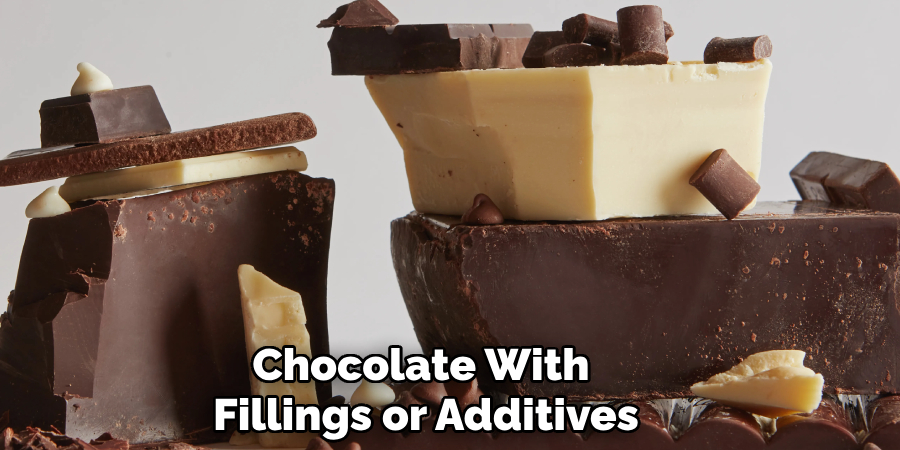
Common Mistakes to Avoid
When storing chocolate, there are several common mistakes that can compromise its quality and longevity. Being aware of these pitfalls can help ensure your chocolate stays fresh and delicious for as long as possible.
Storing Chocolate in the Refrigerator Without Protection
Placing chocolate in the refrigerator unwrapped or improperly sealed can lead to moisture exposure, resulting in sugar bloom or changes in texture. Always use airtight containers or proper wrapping to shield the chocolate from humidity and other odors.
Exposing Chocolate to Direct Sunlight
Exposure to direct sunlight or high temperatures can cause chocolate to melt or develop fat bloom, which creates unattractive white streaks on the surface. Always store chocolate in a cool, dark place to maintain its structure and appearance.
Keeping Chocolate Near Strong Odors
Chocolate is highly absorbent and can take on the smells of nearby items such as spices, cleaning products, or strong foods like garlic and onions. This can ruin its flavor profile, so be sure to store it away from anything with a strong scent.
Frequent Temperature Fluctuations
Moving chocolate between warm and cold environments can lead to condensation and textural changes. Avoid frequent temperature shifts to preserve the chocolate’s original quality.
Conclusion
Proper storage is essential for maintaining the quality, flavor, and texture of chocolate, ensuring it remains a delightful treat for as long as possible. By understanding the specific needs of different types of chocolate—whether dark, milk, white, or filled—and avoiding common storage mistakes, you can extend its shelf life and enjoy it at its best. Pairing good storage practices with careful safety considerations, like protecting chocolate from moisture, odors, and contamination, ensures that your chocolate consumption is both enjoyable and safe.
Thanks for reading, and we hope this has given you some inspiration on how to store chocolate long term!
Professional Focus
Angela Ervin, a former interior designer turned blogger, specializes in kitchen design and renovations. Through her website, she blends her passion for cooking with design expertise, sharing practical and creative ideas. Known for balancing functionality and beauty, Angela’s insightful content has made her a trusted voice in home design and lifestyle.
About the Author
Angela Ervin, an experienced interior designer and blogger, combines her passion for kitchen renovations with storytelling. Living in Petersburg with her family, she enjoys cooking and testing her projects firsthand. Known for her humor and relatable style, Angela shares creative, functional design insights through her content, making her a trusted voice in home design.
Education History
University: Virginia Commonwealth University
Degree: Bachelor of Fine Arts (BFA) in Interior Design
- Angela’s education at VCU focused on mastering core interior design principles, including spatial planning, color theory, materials selection, and sustainable design practices.
- She gained hands-on experience through studio projects and collaborative design exercises, which honed her ability to create functional and aesthetically pleasing environments.
- Her coursework also emphasized problem-solving and practical applications of design, preparing her for real-world projects like her self-directed kitchen renovations.
- The program’s strong foundation in both technical skills and creative expression shaped Angela’s ability to seamlessly integrate form and function in her work.


